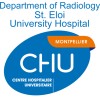
Coronary Flow and Myocardial Viability: the FloVITA Study
Myocardial InfarctionMyocardial IschemiaEvaluation of fractional flow reserve (FFR) is a key method for assessing ischemia with a view to guiding revascularization strategy following acute coronary syndrome. A stenosis that appears to be severe by angiography may cause limited ischemia (with an FFR value >0.80) due to the incapacity of the necrotic zone to achieve physiological hyperemia, i.e. maximal coronary flow. Recently, it has been demonstrated that absolute coronary flow, and micro- and macrovascular resistance, as measured by a thermodilution technique, using the Rayflow microcatheter (Hexacath) are strongly associated with myocardial mass. In extensive necrosis, there is a loss of myocardial mass, and these tools could be of potential interest in measuring myocardial viability, which reflects the extent of remaining viable myocardial mass. Therefore, this study aims to investigate the relationship between both absolute coronary flow and microvascular resistance, and myocardial viability assessed by MRI. In a prospective, single-centre, interventional study, we will compare absolute coronary flow and microvascular resistance in the left anterior descending artery, in patients with and without a history of ST segment elevation MI.

Blood Pressure Variability in Non-hypertensive Patients With Ischemic Cerebrovascular Disease
Ischemic Cerebrovascular DiseaseBlood Pressure VariabilityThis study is a single-center prospective cohort of patients with ischemic cerebrovascular disease (ICVD) who have not met the diagnostic criteria for hypertension. Ambulatory 24-hour blood pressure monitoring (ABPM) will be performed at baseline and one year after the enrollment. The primary purpose of the study is to delineate the relationship of blood pressure variability (BPV) with the risk of composite vascular events in non-hypertensive patients with ICVD. The factors related to BPV, as well as the potential modulators of the associations between BPV and vascular risk, will be further explored among these patients.

Dynamic Changes of the Human Microbiome Predict the Risk of Poor Prognosis in Patients With Acute...
Acute Ischemic StrokeRecent studies have found a close relationship between acute ischemic stroke(AIS) and gut microbiota, but whether the dynamic changes in human microbiome after stroke can predict poor prognosis of stroke remains unclear. Therefore, we planned to explore the predictive value of human microbiome and its metabolites in stroke prognosis through a multicenter cohort study

Circulating circRNA in Acute Ischemic Stroke
Acute Ischemic StrokeCRAST is to analyze the expression pattern of circular RNA (circRNA) by bioinformatics analysis in patients with acute ischemic stroke and healthy control. The candidate circRNA will be verified as biomarkers for the detection and prognosis of acute ischemic stroke.

Functional ComprEhensive AssessmenT by IVUS Reconstruction in Patients With Suspected IschEmic Heart...
Ischemic Heart DiseaseInvestigating the diagnostic accuracy of online Ultrasonic Flow Ratio (UFR) assessment to identify hemodynamically significant coronary stenosis in patients with suspected ischemic heart disease using angiography-derived fractional flow reserve (FFR) as a reference standard.

Molecular Network Characteristics of Phlegm-heat Syndrome in Ischemic Stroke Based on Multi-omics...
Ischemic StrokeAcuteThe molecular characteristics of ischemic stroke with phlegm-heat syndrome and candidate biomarkers were identified based on multi-omics data. The main purpose of this study is to validate the molecular characteristics and biomarkers of phlegm-heat syndrome in ischemic stroke, and to demonstrate the association of biomarkers with clinical outcomes.

Identification of Non-motor Brain Areas Involved in Upper Limb Motor Recovery After Stroke
Upper Limb IschemiaStrokeWhy: Upper-limb recovery post-stroke is challenging. Rehabilitation, aiming to induce plasticity takes an important place in patients' treatment. The last years, non-invasive brain stimulation of the primary motor cortex has gained the communities' interest, allowing direct modification of neural excitability and thus impacting plasticity. Yet, research outcomes remain inconclusive to date. It's expected this to be related to patient heterogeneity including mild to severe motor deficits, and suboptimal site of stimulation. It might be questioned whether M1 stimulation is preferable over that of higher association areas like the parietal or premotor cortex. What: The aim of the study is to identify alternative brain regions to stimulate, related to improved motor quality after a severe initial deficit. How: by following motor recovery over time, by co-recording movement kinematics and brain activity. Because: Stimulation of the novel identified regions may improve motor recovery after stroke.

MRI of Myocardial Infarction
Myocardial InfarctionMyocardial Ischemia9 moreHeart failure (HF) is an enormous health burden affecting approximately 5.1 million people in the US and is the cause of 250,000 deaths each year. Approximately 50% of HF is caused by myocardial ischemia and requires immediate restoration of coronary blood flow to the affected myocardium. However, the success of reperfusion is partly limited by intramyocardial hemorrhage, which is the deposition of intravascular material into the myocardium. Hemorrhagic reperfusion injury has high prevalence and patients have a much greater risk of adverse left ventricular remodeling, risk of fatal arrhythmia, impaired systolic function and are hospitalized at a greater rate. Recent magnetic resonance imaging techniques have improved assessment of reperfusion injury, however, the association between MRI contrasts and reperfusion injury is highly unclear, and lacks specificity to IMH. Improved imaging of IMH and accurate knowledge about its spatial and temporal evolution may be essential for delivery of optimal medical therapy in patients and critical to identify patients most at risk for adverse ventricular remodeling. The overall goal is to investigate the magnetic properties of hemorrhage and develop MRI techniques with improved specificity to hemorrhage. New MRI techniques permit noninvasive assessment of the magnetic susceptibility of tissues and can target tissue iron. Therefore, the investigators hypothesize that MRI imaging of myocardial magnetic susceptibility can map hemorrhagic myocardium. The investigators will perform a longitudinal observational study in patients after reperfusion injury to validate these methods, compare the methods with conventional MR contrasts and develop MR methods for imaging humans.

Stroke Recovery Initiative - Registry for Stroke Research Studies
StrokeAcute Stroke7 moreThe Stroke Recovery Initiative is a nation-wide participant recruitment registry that connects people who have had a stroke with researchers who are working to develop new approaches to improve recovery after stroke.

Spectral-domain Optical Coherence Tomography Findings in Retinal Vessel Occlusion
Retinal IschemiaRetinal vessel occlusions might lead to ischemia of the inner retina, more severe so in artery occlusions. Intracellular edema may develop and decrease transparency of those layers, showing retinal edema. In spectral domain optical coherence tomography (SD-OCT) retinal reflectivity changes as a result of retinal edema. The investigators examine the reflectivity changes of different retinal layers between healthy eyes and eyes with retinal artery occlusion and ischemic or non-ischemic vein occlusions. Aim of the study is to evaluate whether those changes can be used to measure the level of ischemia in the inner retina.
